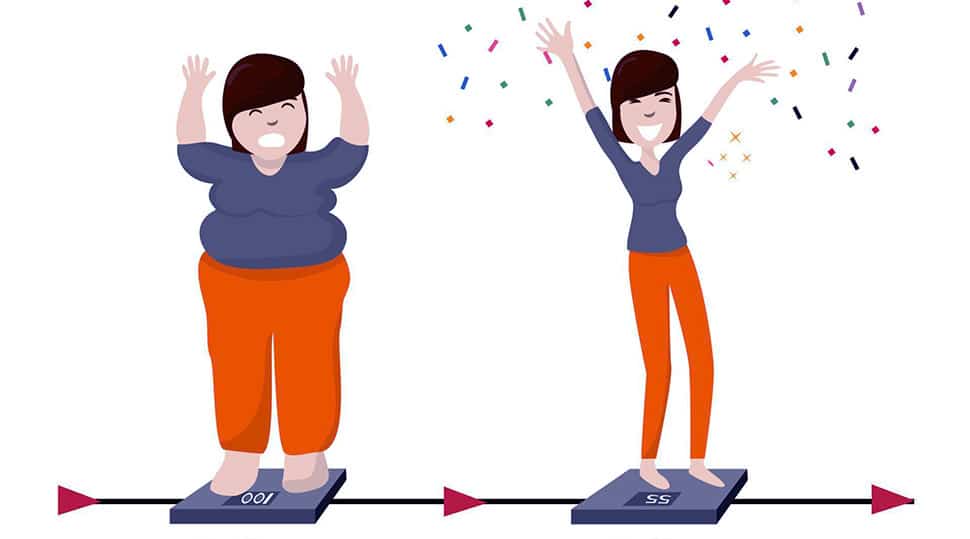“How Much Should I Weigh?” has to be the most asked question by dieters. We have a number of accurate calculators to give you the solid answers you need.
It only seems intuitive that height, age and gender should be part of the analysis in determining how much you should weigh. We will review the three leading methods to answer this question – the methods most used by doctors.
Before we begin, we would like to mention a couple of important notes:
The first is that the medical community is beginning to embrace methods that focus on measuring fat in your waistline as opposed to BMI.
There is now ample evidence that abdominal fat creates a number of health issues. So you may have an acceptable BMI, yet still be unhealthy because of your waistline.
Secondly, dieters tend to look at multiple calculators and calculations. What is not surprising is that they tend to focus on the calculation that paints them in the best light. Sound familiar?
The purpose of this article is to expand your horizons on how to look at your body…it just may save your life.
Finally…Reducing abdominal fat is critical in a diet and for your health. These are the three most effective methods to reduce abdominal fat:
- The Keto Diet uses a natural form of keto salts to trigger ketosis, where your body burns fats instead of carbs. Dieters should expect to lose 20 pounds the first month.
- The Fat Decimator System is the most effective diet and fastest diet on the market. It targets stored body fat, and is designed to burn 12-23 pounds of stored body fat in 3 weeks.
- Raspberry Ketones is the most effective diet supplement on the market today. One capsule twice per day breaks apart fat cells and burns them for energy.
Option 1: Using BMI To Determine How Much You Should Weigh
Let’s first take a look at BMI – Body Mass Index. The premise of the BMI is that it relates weight to your height – so it provides an overall guide to an individual’s fitness.
On many levels this makes sense as you would expect taller individuals to have more weight built into the formula.
One common misconception is that there is more than one BMI calculation. There is – but they yield the same results.
There are two BMI formulas which account for the two different measurement systems used globally (imperial units in the United States, and metric used most elsewhere).
Let’s take an example with a 200 lb. person that is 6 feet tall:
BMI Imperial Units: (Weight in Pounds) x (703) / (Height in Inches)2
Example: 200(lbs.) x 703 / 722 (inches) = 27.12 BMI
BMI Metric Units: (Weight in Kilograms) / (Height in Meters)2
Example: 90.7185(kilograms) / 1.82882 (meters) = 27.12 BMI
BMI Weight Chart – Check Your Weight At A Glance
Based on BMI, let’s take a look at what health authorities consider to be the ranges for normal weight, overweight, obese, and extreme obesity:
Calculate Your BMI Using Your Height And Weight
To be more specific with your body type, please input your height and weight into the following BMI calculator:
Compare Your BMI Value To Determine Your Ideal Weight
You can now use the above calculation to see where you fit within the guidelines below:
Pros And Cons Of Using BMI To Calculate What You Should Weigh
Pros
One of the strongest attributes of BMI is that it is widely used within the medical community as a measure of overall fitness. Both BMI charts above make it easy to calculate how much you should weigh, and easy to determine where you are right now.
Cons
One of the downsides of the BMI method is that it is gender and age neutral – and it does not take into account muscularity and bone thickness. Why would this matter?
- Muscles weigh more than other tissues, so muscularity in men and athletes tends to overestimate the BMI value in muscular individuals and athletes.
- If you have a larger frame with larger bones, then this method will also tend to overestimate your BMI value.
- If you are a senior citizen, muscle mass tends to decrease with age. Therefore, senior citizens tend to have their BMI underestimated.
Bottom Line
BMI will not tell you if you are healthy, but the BMI method is still one of the most accurate methods to determine your overall fitness.
- We would recommend that muscular, athletic or larger-framed individuals add +5% to the weights you see in the weight chart to get a more representative estimate of how much you should weigh.
- We would also recommend that senior citizens subtract -5% from the weights you see in the weight chart to compensate for the loss of heavier muscle tissue experienced during aging.
Option 2: Using “Waist To Hip Ratio” To Determine How Much You Should Weigh
The Waist To Hip Ratio (WTH) does exactly what it says – it creates a ratio of the circumference of your waist relative to that of your hips.
Why would this be important? As you may already know, people tend to have either an apple or a pear shape. Apple shaped bodies have larger waists, and people with pear shaped bodies have more weight in their legs.
Studies have shown repeatedly that people with apple shaped bodies have much higher health risks than people with pear shaped bodies. Abdominal fat, also referred to as visceral fat, is a layer of fat that encases your vital organs. If you can imagine that then you can understand the health ramifications.
The American Dietetic Association has stated that excess fat in the abdominal region is associated with early heart disease, diabetes, high blood pressure – and even cancer.
One study concluded that if WTH was used instead of BMI that many lives would be saved.
Calculate Your Waist to Hip Ratio
Let’s start by inputting your waist measurement and hip measurement:
Your waist should be measured approximately one inch above your navel. If you wear your clothes below that area, take that measurement and use the larger of the two.
When measuring your hips, make sure that you are level (so use a mirror), and also make sure that you are measuring over the largest part of your buttocks.
WHR for Women
Less than 0.8 – Low risk of health issues
0.8 to 0.89 – Moderate risk of heart disease, diabetes, high blood pressure, cancer
0.9 or over – High risk of heart disease, diabetes, high blood pressure, cancer
WHR for Men
Less than 0.9 – Low risk of health issues
0.9 to 0.99 – Moderate risk of heart disease, diabetes, high blood pressure, cancer
1.0 or over – High risk of heart disease, diabetes, high blood pressure, cancer
Pros And Cons Of Using WTH To Calculate What You Should Weigh
Pros
The WTH tackles what is becoming a very important issue – the waist. Numerous studies have concluded that excess abdominal fat can lead to very serious health consequences.
Cons
A person can have a profoundly large waistline, but if their hips are even larger than their waistline, that individual could be deemed healthy by this measurement.
An example: A person with a 44 inch waistline and 55 inch hips would have WTH of .80 – and be considered healthy!!
Bottom Line
The Weight To Hip Ratio is extremely simple to understand – Weight divided by Hip. It focuses on the waistline which is public enemy #1 for your health.
- We believe that this measurement is a step in the right direction, and for most individuals, this will guide dieters to a better understanding of how much they should weigh.
- However, as noted above, certain body types can lead to highly inaccurate conclusions.
Option 3: Using “Waist To Height Ratio” To Determine How Much You Should Weigh
Health authorities say that your Waist-To-Height-Ratio (WHtR) is an even better judge of body fat than BMI, and hence will provide you with a better analysis of how much you should weigh.
A study was conducted by Dr. Margaret Ashwell, former Science Director at the British Nutrition Foundation, and involved over 300,000 participants.
They concluded that Waist To Height Ratio was better than BMI at predicting heart attacks, strokes, diabetes and hypertension.
The concept is that abdominal body fat, specifically visceral fat which surrounds your vital organs, has far more health consequences than fat in your legs, as an example.
Therefore, comparing your abdominal measurement relative to your height is a more instructive method to determine how much a person should weigh.
Calculate Your Waist to Height Ratio
To begin, measure your waist exactly one inch (or one centimeter) above your navel. The only other measurement you need is your height, and input both figures into the calculator below:
Females:
- Under 35% – Abnormally Slim To Underweight
- 35% – 42% – Extremely Slim
- 42% – 49% – Healthy
- 49% – 54% – Overweight
- 54% – 58% – Seriously Overweight
- Over 58% – Extremely Obese
Males:
- Under 35% – Abnormally Slim To Underweight
- 35% – 43% – Extremely Slim
- 43% – 53% – Healthy
- 53% – 58% – Overweight
- 58% – 63% – Seriously Overweight
- Over 63% – Extremely Obese
Pros And Cons Of Using WHtR To Calculate What You Should Weigh
Pros
The WHtR addresses one of the main flaws in the BMI model by focusing on abdominal fat – the leading cause and predictor of heart attacks, strokes, diabetes and hypertension.
Cons
Although this may not be common, it could lead a person with a relatively flat abdomen – who may be heavy elsewhere – to believe that they are in fine shape.
Summary
The Weight To Height Ratio is extremely simple to understand – Weight divided by Height. Instead of a one size fits all approach on how much you should weigh, it instead channels your efforts on the single most important area of your body – your midsection.
- This method is highly recommended because it focuses our attention on what can make us ill and lead to complicated health issues – the fat in our abdomen.
- Since abdominal and visceral fat is the most dangerous of body fats, using this method makes it very easy to focus on just one thing to help you determine your ideal weight.
Conclusion
All three methods offer a unique perspective with your weight, and all three methods should be used to help you understand the complete picture.
BMI is a great way to boil things down to one number. It is still used by doctors, and will truly help you discover the proper weight range for a person of your height.
WTH is a better method to assess your ideal weight as it focuses on your waistline and hips, not to mention the health ramifications of a large waist.
A word of caution regarding BMI and Waist-To-Hip (WTH):
- You can have a great BMI value if you’re skinny in your arms, you’re skinny in your legs, and you have a large belly – but you are facing considerable health risk.
- You can have a great WTH value if you have a large belly with much larger hips – but you are facing very serious health risk.
Our recommendation is to:
- Use BMI to determine the ideal range for your weight
- Use the Waist To Hip Ratio to understand what is a healthy proportion for your midsection
- Use the Weight To Height Ratio to understand the proper waistline you need to get healthy
And if we had to pick which is the most important measurement you need to understand fully – hands down – please spend time to understand The Weight To Height Ratio. It will help you the most with your health.
We trust you now have some answers on the elusive question: “How Much Should I Weigh?”






